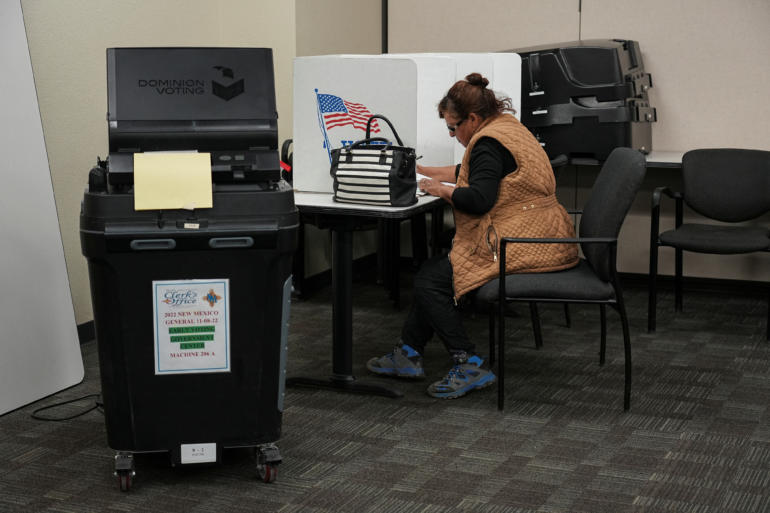As U.S. politicians work to sway voters in the final weeks before the midterm elections, experts are watching nonpartisan voters.
Election Day takes place November 8, but some states have begun early voting, and many people have already gone to the polls.
Nonpartisan voters make up 42 percent of Americans, according to a Gallup poll.
And their votes could swing close races.
Also called unaffiliated or independents, these voters aren’t affiliated with either Democrats or Republicans.
In the U.S. state of Nevada, independents make up nearly a third of the state’s voters, and in North Carolina they recently became the largest voting group in the state.
Before 2011, independent identification had never reached 40%, according to Gallup.
Christopher Cooper, political science professor at Western Carolina University, doesn’t think the growing number of independents will slow down anytime soon, he told the Washington Post.
“As Americans increasingly, one, express dissatisfaction with the two major parties and, two, do some social covering — if you say you’re a Democrat or a Republican, you might be shut out of dating pools, you might be shut out of a job. So [choosing nonpartisanship] is a way to cover yourself, but it’s also a way to express dissatisfaction with the two major parties.”
Researchers note, dissatisfaction with the two-party system as a common response to identifying as an independent.

A man walks into the voting area at the El Paso County Coliseum as early voting begins for the upcoming midterm elections in El Paso, Texas, U.S., October 24, 2022. REUTERS/Paul Ratje
However, they also point out party switching is common, especially during election cycles.
Gallup polls often show a decrease in independents during a presidential election year and an increase the year after.
Over 50 percent of independents from the 2016 election identified with either the Democratic or Republican party in 2020, according to a Washington Post analysis.
Researchers caution, while many say they are tired of the options provided by the two-party system,
recent tensions over racial justice, women’s health, immigration and other issues have also fueled party realignments.
Depending on their political views, “…people who felt only weakly connected to ‘their’ party may have shifted to the party more closely aligned on those identity grounds,” the Washington Post reports.
Polls give mixed results as to which way independents will vote during the midterm elections.
Concerns over issues such as the economy can continue to sway voters through Election Day.
“If history is a good predictor, independents, not the two bases, will determine which party comes out the winner on Nov. 8,” according to David Winston, co-head of the Winston Group and adviser to House and Senate Republican leadership.
 CGTN America
CGTN America
 Carmen Dolores Fernandez votes for her first time during early voting for the upcoming midterm elections in Las Cruces, New Mexico, U.S., October 24, 2022. REUTERS/Paul Ratje
Carmen Dolores Fernandez votes for her first time during early voting for the upcoming midterm elections in Las Cruces, New Mexico, U.S., October 24, 2022. REUTERS/Paul Ratje
